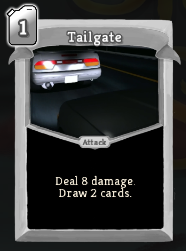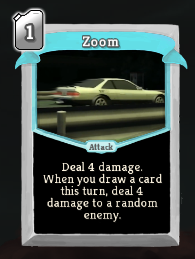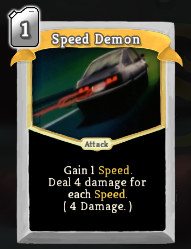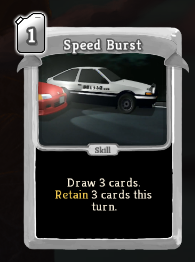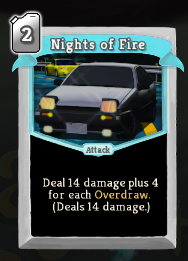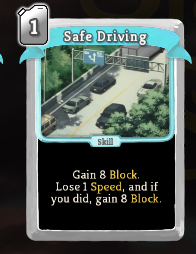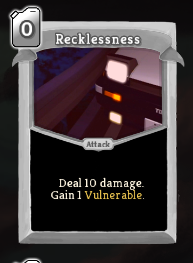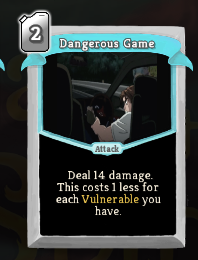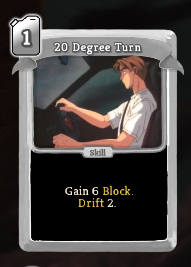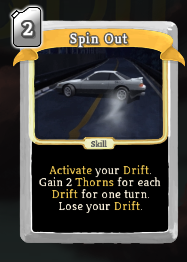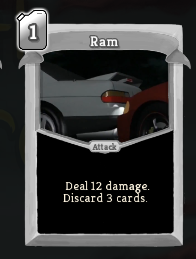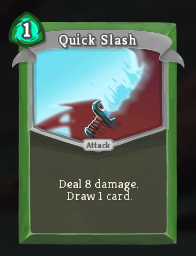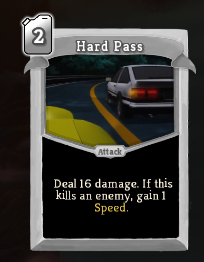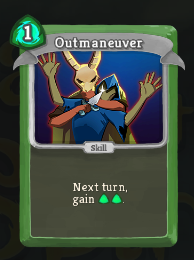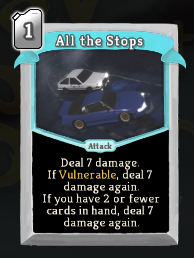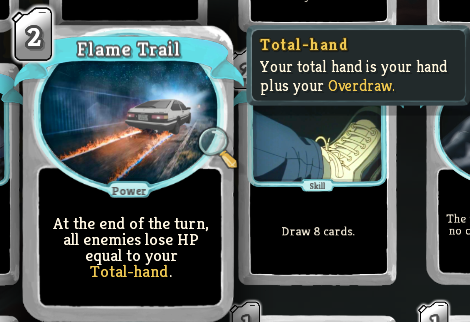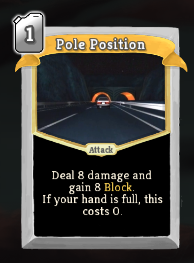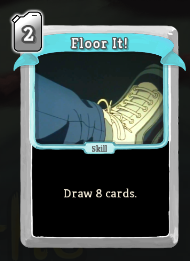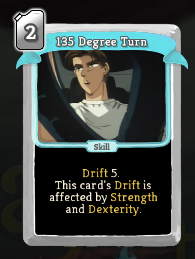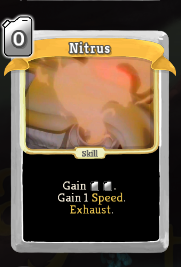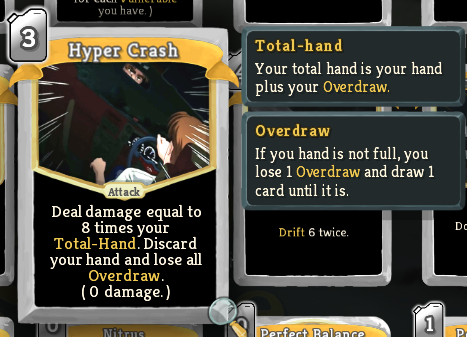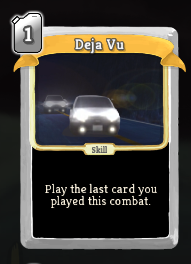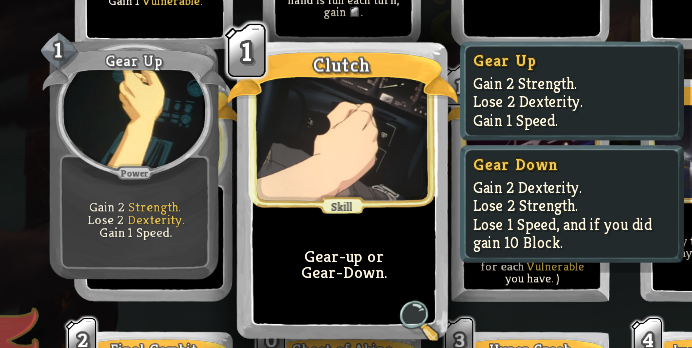Designing 85 Cards for a Successful Slay the Spire Mod
Design Goals for this Mod
Balanced around base-game: The Mod should be as close as possible to the difficulty level of base-game.
Uses base-game design conventions: The mod should be designed in a similar way as base-game characters. This entailed:
Creating synergy groups of cards which work well together.
Creating overlap between these synergy groups
Ensuring a similar distribution of card types and card rarities as base-game.
Ensuring character would have adequate tools to defeat all of the enemies in base-game.
Ensuring there was enough support for certain relics (Chemical X)
Ensuring that the character wouldn’t be overpowered when using colorless cards.
Should include base-game mechanics which players expect, like Weak, Vulnerable, Strength and Exhaust.
Pays homage to Initial D: Character should contain fun references for fans of the series.
Captures the feeling of driving fast and drifting: An important thematic I wanted to capture.
How I Designed Cards for the Drifter
Following The Design Conventions of Slay The Spire
Card Rarity Distribution: Character should have around 18 Common, 36 Uncommon and 18 Rare cards.
Attack, Skill, Power Distribution: Character should have roughly equal number of skills and attacks, and about half as many Powers.
Cost Distribution: Vast Majority (40) cards should cost 1, with fewer 0-cost and 2-cost (10-15), and very few 3 costs and above. (~5)
X-cost cards: At least 2 X-cost cards should be present, due to the Chemical X relic.
Block Cards: Around 14 Block cards should be present.
AoE Cards: Many fights are designed around player having access to area damage. 4-6 AoE cards should be present.
Synergy: Characters should have Synergy Groups that interact with each other.
Mechanics and Thematics to Design Cards Around
Mechanics
Drift: Drift is a mechanic which requires a large number of cards in the draft. The player will be expected to play Drift cards each turn, so seeing them frequently will enable this strategy.
Self Vulnerable: Cards which make the player take more damage, but have a greater effect.
Drawing, Speed: Drawing many cards and the Speed mechanic are a major part of the Drifter, as well as Overdraw, which allows players to draw past their hand size.
Discard / Small Hand: Cards which discard cards or work off of having few cards in hand.
Thematics
Insane Draw Power: Cards should surprise the player with drawing a ridiculous number of cards. This enables the Overdraw mechanic to shine and mimics the thematics of driving as fast as possible.
Crazy Stunts, Reckless Driving: Cards should enable the player to feel like they are pulling off daring stunts, pushing past the boundaries of what is possible, like the character in Initial D.
Damage and Block - The Main Outputs for Cards:
Damage and Block are the two main things that cards achieve in Slay the Spire. Players need to deal damage to defeat enemies, and Block to defend against attacks. The simplicity of the mechanic and interplay of how a player shapes their deck around Attacks and Blocks is at the heart of Slay the Spire’s gameplay.
Draw and Energy Generation, and Card Manipulation - Secondary Outputs:
Drawing cards and generating energy to play more cards is also a large part of Slay the Spire’s gameplay. This can be extended to any effect which allows you to search through your deck and manipulate cards.
Catalysts and Actuators:
For two cards to have synergy one of them must perform an action, and the other benefits from said action. In this way we can imagine synergy as a two-step process.
Catalyst: Action being performed.
Actuator: Card which benefits from said action.
Using this pattern, we can create cards which work together.
Synergy Groups in The Drifter
Drawing During Turn
Cards which draw - Catalyst
Cards which perform an action when cards are drawn during the turn - Actuator
Taking into account The Drifter’s Strengths and Weaknesses
Strengths
Drawing: Draw cards can be much more powerful on the Drifter compared to base-game slay the spire.
Consistency: Because of insane draw power, the Drifter will often have access to the specific cards they need.
Weaknesses
Energy Generation: To avoid infinite combos and easy gameplay, the Drifter’s cards which generate Energy should be weaker, and access to them sparser.
Blocking: Due to the fantasy of reckless driving, the Drifter should have a harder time establishing a purely defensive strategy.
0-cost cards: Similar to energy generation, 0-cost cards on the Drifter must be weaker, due to how easy it is to draw them.
Creating Synergy Groups Around Mechanics
Overdraw
Cards which draw - Catalyst
Cards which retain cards in hand - Catalyst
Cards which gain more value from having a large number of cards in hand - Actuator.
Speed
Speed is an effect which draws extra cards each turn. However going too fast will incur negative effects.
Cards which gain Speed- Catalyst
Cards which gain value from Speed - Actuator
Cards which consume Speed for effects- Actuator.
Self Vulnerable
Cards which gain Vulnerable- Catalyst
Cards which gain value from having Vulnerable - Actuator
Drift
Cards which gain Drift- Catalyst
Cards which spend Drift for powerful effects - Actuator
Discarding / Small Hand
Cards which discard- Catalyst
Cards which have effects based on few cards in hand - Actuator
Process of Designing Specific Cards
Use Base Game Cards for Balance
A way to ensure that cards are of relatively the same power level as regular Slay the Spire cards is using those base game cards as a reference when designing.
Design to The Drifter’s Strengths and Weaknesses
If The Drifter were balanced exactly like the base game characters, its identity would be weaker. For example, card draw should be plentiful on the Drifter, so draw values can afford to be higher, and draw cards more powerful.
Designing Common Cards
Common cards are very likely to be seen frequently. These common cards have to be carefully designed, as it will shape how the character plays across a majority of runs.
Common Cards Act as Catalysts
By including a lot of Catalyst type cards, we can allow the player to start building their strategy, and when they find Actuator cards for those synergies, they are more likely to be able to make use of them. Common cards should provide effects that all of the character’s synergy groups make use of:
Drawing cards
Discarding Cards
Gaining Drift
Gaining Vulnerable
Retaining Cards
Gaining Speed
Our common pool should provide these effects, while providing a mix of damage, block, and other useful effects like draw, energy and card manipulation.
Common Cards should include powerful Attacks.
Players will often need powerful attacks to survive act 1 in higher difficulties, and defeat certain key enemies in the game such as Gremlin Nob.
Designing Uncommon Cards
Uncommon cards are the bulk of the cards in the draft, and are the most varied. They can be more unique than common cards, but not explosive as rares. Can contain a mix of Catalysts and Actuators.
Uncommon Cards allow Crossover Synergies
One of the major parts of Slay the Spire’s design is the mixing of different synergy groups. Uncommon cards can allow us to create effects which mix different synergy groups, allowing decks to become fluid and interesting.
Uncommon Cards Cover gaps in Mechanics
Some mechanics in Slay the Spire are common across all characters to varying degrees. Most character have access to Strength, Dexterity, Weak, Vulnerable and Exhaust / Ethereal as baseline mechanics. Uncommon cards can provide these mechanics.
Designing cards to Meet Goals
During the process of creating the draft, I constantly reassessed the draft to see if it was hitting all the right targets.
Were there enough block cards?
Was drawing too prevalent, or not enough?
Did the player have access to enough Powers?
Were some Synergies over-represented or under-represented?
Designing Rare Cards
Rare cards are flashy, exciting and powerful. Designing rare cards allows you to push the boundaries of what is possible. Creating Rare cards is a good way to exercise creativity.
Powerful Payoff cards / Actuators
The easiest way to design a Rare card is to give it a powerful payoff to a certain synergy group, while making it very situational to that synergy group.
Generally Efficient and Useful
Another way to design rare cards is to make them very useful in most decks; a card players will be happy to encounter whenever they see it.
Cards which Address Weaknesses
Since Rare cards are less common, they can be allotted to address weaknesses in the character, in the Drifter’s case, generating energy.
Designing Cards based on Thematics
Some cards in The Drifter were designed with a ‘Flavor First’ approach, trying to emulate the key themes of The Drifter.
Cards which are Surprising
Some cards were designed to surprise the player. For example, Floor It draws 8 cards and upgrades to 12, which on any other character would be an unnecessary amount of card draw (Due to the hand limit of 10.) however with the Overdraw mechanic, that extra draw can be useful.
Flavorful Cards
Cards which are designed around the idea of driving. Like Clutch, which allows you to ‘Gear up’ or ‘Gear down’ your vehicle, either gaining Strength and Speed, or Dexterity and losing Speed.
References to Source Material
Some cards were direct references to Eurobeat and Initial D. Like Deja Vu (As the eurobeat song) playing a copy of the last card played this combat.
Evaluating The Draft
The draft of cards went through many iterations of playtesting and evaluation.
Ensuring Synergy Groups were Represented
Sorting cards into Synergy groups, I could see which were represented, and how many catalysts and actuators were present, as well as the presence of cross-synergies.
Ensuring Distribution was similar to base-game.
I also evaluated the draft for adhering to base-game statistics, adding or removing cards of certain types as needed.
Playtesting
Finally, the draft couldn’t be complete without a lot of playtesting. I tested the Drifter myself, as well as showing it to others in the community.
The Drifter went through just over a year of playtesting before the mod was released, then another year of updates in response to community feedback and engagement.
Engine Rev is uncommon and exhausts (meaning it can only be used once per combat) - making it weaker overall.
